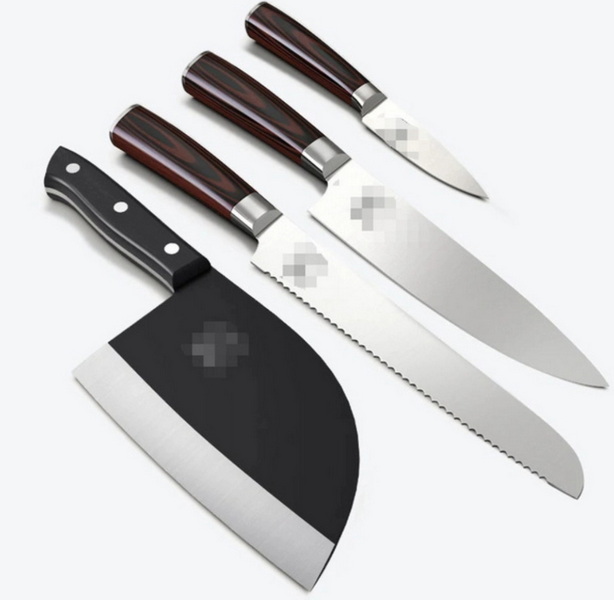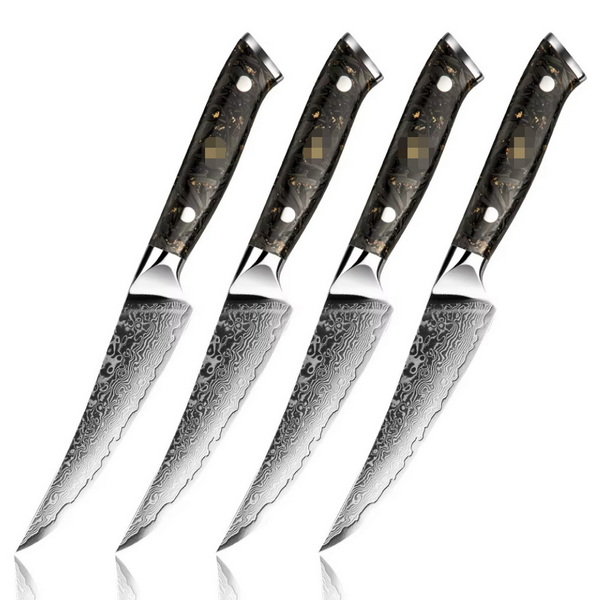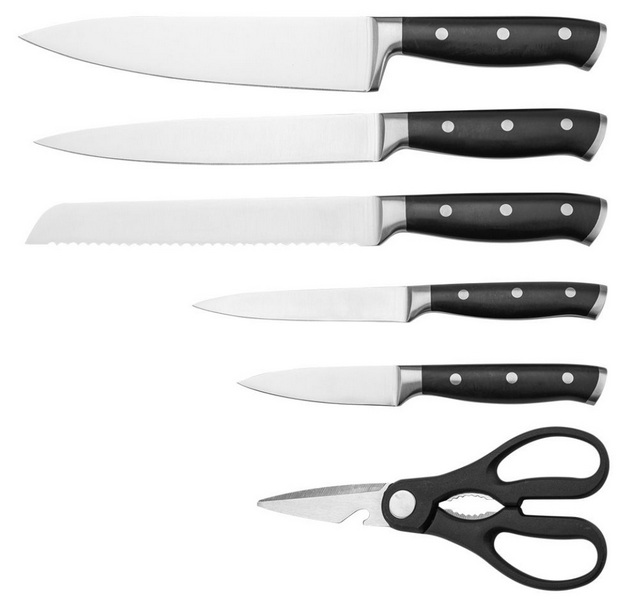- All
- Product Name
- Product Keyword
- Product Model
- Product Summary
- Product Description
- Multi Field Search
Views: 222 Author: Ann Publish Time: 2025-11-02 Origin: Site











Content Menu
● Chinese steak knife sector overview
>> Market D: Southeast Asia and Oceania
● Materials and design considerations
>> Handle materials and ergonomics
● FAQ
>> 1. What core performance metrics define a steak knife?
>> 2. How does material choice affect blade life?
>> 3. How can brands achieve customization?
>> 4. What MOQs are typical for steak knife OEM projects?
>> 5. What lead times and QA processes are typical?
China's knife-making heritage and modern manufacturing capacity have evolved into a robust platform for producing high-quality steak knives tailored for international brands, wholesalers, and manufacturers seeking reliable OEM solutions. This article explores the key export markets where Chinese steak knives find strong demand, the design and material considerations that drive performance, and how Original Equipment Manufacturer (OEM) collaborations can unlock value—whether the target is a private-label line, a designer collection, or a value-oriented catalog.

The Chinese kitchen knife industry has matured from artisan workshops into scale-oriented production hubs with integrated supply chains. Core competencies include forging or stamping blade blanks, precision heat treatment, advanced surface finishes, ergonomic handle design, and comprehensive packaging solutions. For steak knives, the capability to customize blade geometry (straight-edge versus serrated), blade thickness, tang style, and handle materials (wood, composite, resin, micarta, or metal) enables brands to tailor offerings to distinct regional preferences and culinary traditions. In OEM partnerships, manufacturing partners typically provide end-to-end services—concept to delivery—covering design consultation, prototype validation, mass production, quality assurance, private labeling, and shipping logistics. The result is a scalable, cost-competitive path to market for foreign brands seeking reliable supply of steak knives at consistent quality and on-time delivery.
North American buyers prize balance, edge retention, corrosion resistance, and consistent hardness in steak knives. Preferred blade steels range from stainless options to high-carbon stainless blends that resist staining in commercial kitchens. Handle ergonomics are important, with emphasis on slip resistance and comfort during long prep sessions. For OEM collaborations, North American partners often require detailed specifications packages, traceability documents (COC/LOT), and packaging in English-language formats aligned with branding guidelines. Demonstrating compliance with relevant safety standards and certifications helps accelerate market entry. Images and video content demonstrating safe grip, cutting efficiency, and durable finishes can reinforce value propositions in this market.
European buyers look for premium materials, precise tolerances, and refined aesthetics that align with regional kitchenware traditions. Serrated edges may be favored for certain bread-inclusive menus, while straight edges suit precise meat portioning. Surface finishing, corrosion resistance, and long edge life are critical, particularly for professional kitchens and boutique retailer lines. OEM partners in Europe frequently customize packaging to meet regional retail standards and may provide multilingual labeling. Video demonstrations of blade performance across diverse food textures, along with close-ups of ergonomic handles, help convey quality and design finesse.
In Middle Eastern markets, culinary culture emphasizes robust, durable tools capable of withstanding high-usage environments and demanding preparation tasks. Knife sets with bold handle materials, durable coatings, and secure grips are attractive. OEM collaborations often prioritize bulk orders, multi-language labeling, and scalable packaging solutions. Demonstrations of non-slip handling and fatigue resistance in high-volume kitchens contribute to compelling marketing content.
Markets in Southeast Asia and Oceania frequently prioritize value without compromising safety and performance. Efficient supply chains, shorter lead times, and adaptable MOQs suit emerging brands and regional distributors. For steak knives, designs that balance affordability with ergonomic comfort and dependable edge life perform well. OEM partners can offer mix-and-match packaging, regional language labels, and flexible minimum order quantities to accommodate growing markets.
- Stainless steel: Offers corrosion resistance, ease of maintenance, and a balanced combination of hardness and toughness. Ideal for high-use, sanitizer-heavy environments common in professional kitchens.
- High-carbon stainless steel: Provides higher edge retention relative to standard stainless grades while maintaining reasonable corrosion resistance; a popular choice for premium steak knives.
- Carbon steel with protective coatings: Some chefs prefer carbon steels for edge sharpness, paired with protective finishes to mitigate rust, though maintenance requirements increase.
- Damascus and specialty alloys: For premium lines, Damascus patterns and multi-layer constructions provide aesthetic appeal and potential performance benefits, though cost and consistency need careful supplier management.
- Straight-edge blades: Favor precision slicing and clean cuts, popular for premium steak knives intended for home and professional use.
- Serrated edges: Excel at slicing through crusts or tougher textures; often chosen for bread-inclusive menus and outdoor or portable setups.

- Wood, resin, micarta, and layered composites: Each offers distinct grip feel, moisture resistance, and weight balance.
- Metal and hybrid handles: Provide durability and premium aesthetics, with careful design to maintain comfort during extended use.
- Ergonomic considerations include finger grooves, palm swell, balance point alignment, and overall weight distribution to reduce fatigue.
- Forging vs stamping: Forged blades typically offer superior strength and grain structure, while stamped blades can be cost-effective for high-volume production.
- Heat treatment: Precision hardening and tempering optimize edge retention and toughness; inconsistent heat treating can lead to brittleness or soft edges.
- Surface finishing: Polished, matte, brushed, or coated finishes influence corrosion resistance and visual appeal.
- Engraving and branding: Private labeling often includes laser engraving or etching for logos and model information.
- Packaging design: Brand-consistent packaging reinforces perceived value and helps with retail placement and consumer trust.
- Clear requirements: Provide a detailed brief with blade geometry, edge type, handle material, tang style, coating, and packaging specs.
- Prototyping and validation: Early-stage samples validate fit, balance, and aesthetic alignment with the brand.
- Quality assurance: Implement dimensional checks, hardness testing, edge sharpness testing, and corrosion resistance assessments; document results for traceability.
- Regulatory alignment: Ensure labeling, material disclosures, and certifications align with target markets (language, units, safety marks as applicable).
- Private labeling and customization: Offer SKU-level customization, serial numbering, and co-branding opportunities to strengthen retailer relationships.
- Logistics readiness: Align production schedules with lead times, packaging readiness, and shipping regulations to meet windowed launches.
- Sample-to-production cycle: A well-planned cycle reduces iteration time, accelerates speed-to-market, and minimizes rework.
- Scaling production: Starting with a smaller pilot run to validate packaging and labeling before full-scale production mitigates risk.
- After-sales support: Provide spare parts programs, maintenance guidance, and warranty provisions to reinforce customer confidence.
- Cultural and culinary alignment: Tailor knife profiles and marketing imagery to reflect regional dining practices, culinary terminology, and customer expectations.
Partnering with a Chinese supplier for steak knives unlocks a combination of manufacturing prowess, design flexibility, and supply-chain resilience that is well-suited to international brand ecosystems. By selecting an experienced OEM partner, brands can leverage robust process control, customizable blade geometries, diverse handle options, and scalable packaging to meet evolving consumer demands. The resulting value proposition combines performance, consistency, and speed-to-market, enabling distributors to grow market share while maintaining competitive pricing.

- Core metrics include edge retention, hardness, balance, weight distribution, corrosion resistance, and user comfort in grip and control. Each metric is influenced by blade steel selection, heat treatment, and blade geometry.
- Higher hardness tends to improve edge retention but can reduce toughness; selecting an alloy and heat-treatment regime that balance hardness with toughness is essential for commercial durability.
- Customization spans blade finish, edge type, handle material, engraving, packaging, and private labeling; MOQs and lead times vary by complexity and production capability.
- MOQs depend on model complexity and customization level; partnerships often offer scalable options to suit both small brands and larger distributors; exact figures are provided during supplier consultation.
- Lead times vary by volume and customization; QA typically includes material certifications, dimensional inspection, edge sharpness testing, and final packaging checks to ensure compliance with brand standards.
The Ultimate Professional Knives for Halal Butchery in Middle Eastern Kitchens
Chef Knife Size Guide: Choosing Between 6″, 8″, 10″, And 12″
Custom Knife Handles: How To Design A Chef Knife That Fits Your Hand Perfectly
Chef Knife Surface Treatments Guide: From Polished Migaki To Damascus Patterns
Inside Our Professional Knife Sample Room: Quality You Can See
Universal Knife Block Buying Guide: Modern Acrylic & ABS Knife Holders for Professional Kitchens
Universal Knife Block: The Complete Guide To Modern, Hygienic Knife Storage
The Complete Guide To Red Handle Knife Sets: Style Meets Functionality in The Kitchen
Professional Knives for Halal Butchery And Middle Eastern Cuisine